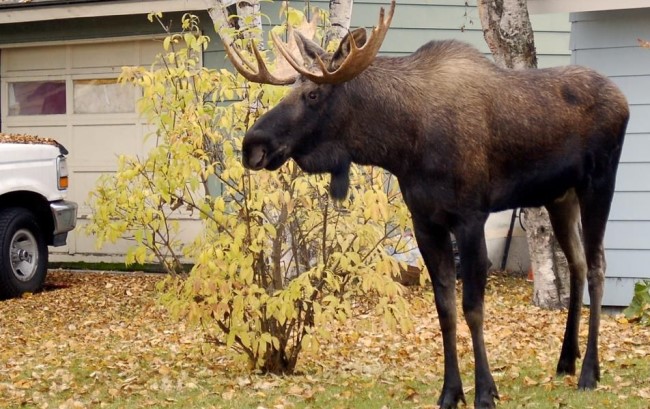Camping & Survival
Why I’d Rather Startle a Black Bear Than a Moose

Every outdoorsman has a story about rounding a corner in the woods and finding a Surprise Bear. Most of these stories end with “and then the bear wandered away snorting like I’d told it a stupid joke.” It’s a common tale because black bears are fairly common, and because most of them can be deterred by the simple expedient of telling them to go away loudly, while waving your arms. (Ahem, do make note of the word “most.”) Far fewer outdoorsmen have tales of the Surprise Moose, but of those who do, almost all of them would much rather deal with a black bear. Today, we have some words of caution from the Utah DWR about the moose loose in that part of the country. Although there will be minor regional differences in moose behavior (largely related to the terrain), these tips and strategies will apply anywhere there are moose loose.
“In my years of working with wildlife, I have dealt with bears, rattlesnakes, cougars and moose, and the only species that I’ve had turn and come back at me was a moose,” DWR Wildlife Section Chief Covy Jones said. “People often underestimate how aggressive they can be.”
Due to drought conditions this summer, people could see more moose in urban areas in search of water sources. Moose are also more impacted by ticks during drought seasons because winter ticks have a higher survival rate during mild winters and springs. Utah Division of Wildlife Resources biologists have reported up to 10,000 ticks on a single moose. As a result, people may see “white moose” in Utah during April and May, due to the animals rubbing off hair in an attempt to get rid of the ticks.
Adult moose in Utah can weigh between 600 to 1,000 pounds, and bulls can stand 6 feet tall at the shoulder. Due to their large size, moose can be dangerous when they feel threatened.
Know moose behavior
Cow moose can be aggressive when they have calves in the spring and summer, and bull moose can be aggressive and territorial during the fall breeding season. Moose often feel threatened when people or dogs get too close, which can also make them aggressive and lead them to charge, knock someone over and stomp on them.
Some physical warning signs that a moose may become aggressive include:
- Lowering their head
- Hair standing up on the neck
- Licking their snout
- Pinning their ears back
In some areas of the U.S., wildlife agencies report that more people are injured by moose than bears each year.
If you encounter a moose, here are some tips to help you stay safe:
- Always give the moose a lot of space and watch its behavior.
- Never try to approach or feed a moose.
- Keep dogs leashed and under control at all times. It is against Utah law to allow dogs to chase or harass protected hoofed wildlife, like moose.
- Stay calm and do not run away. Talk, make your presence known and slowly back away in the direction you came.
- If a moose charges you or chases you, hide behind something solid (like a tree) or try to get inside a vehicle or building.
- If a moose knocks you down, curl into a ball, protect your head and lie still until the moose retreats.




